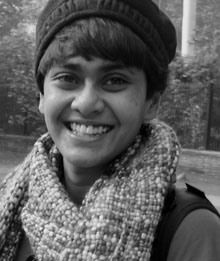

An Evening with Justice M.N. Venkatachaliah
- /
- Articles and Blogposts /
- An Evening with Justice M.N. Venkatachaliah
Interview by Harish Narasappa, Shivabhushan Hatti, and Kavya Murthy
Earlier this year, the DAKSH team interviewed ex–Chief Justice of India, M.N. Venkatachaliah. A renowned luminary of the Indian courts, Justice Venkatachaliah is well known for his immense contributions to the field of law in India.
His education was in the former State of Mysore with a Bachelor’s degree in Science and a Bachelor’s degree in law from the University of Mysore. He commenced his practice of law in the year 1951 and was appointed as a Permanent Judge of the High Court of Karnataka in 1975. He was appointed as a Judge of the Supreme Court of India in the year 1987. Justice M.N. Venkatachaliah served as the 25th Chief Justice of India for about twenty months and retired from the Supreme Court in the year 1994. He has also served as the Chairman of the National Human Rights Commission and headed the National Commission to review the working of the Constitution. Justice M.N. Venkatachaliah is also a Padma Vibhushan awardee.
Now 85 years old, Justice Venkatachaliah lives in South Bangalore with his family. Amicable and welcoming, he is frequently busy with visitors. It was a fascinating experience to meet a mind so sharp at 85, and so full of insight.
The DAKSH team had prepared a set of questions that emerged from our work at The Rule of Law Project, ranging from an interest in Justice M. N. Venkatachaliah’s own history as a Chief Justice of India and in our data analysis dismantling or building upon commonly held assumptions on judicial delay. Justice Venkatachaliah’s commentaries have given us useful insight into the number of ways in which the problems of case-flow management in the various tiers of the courts can be attended to.
Justice Venkatachaliah addressed our questions with the complexity necessary for a close look at the problem of judicial delay. He opened the issue by pointing out how a singular number of pendency – now held to be 45 lakh cases in the High Court, and 2.8 crores in the lower courts – is essentially meaningless unless seen at tandem with case–flow management, and litigation rates in India.
Interviewer
Sir, the first stage of The Rule of Law Project was to see how to collect data on actual pendency. In looking through what kind of data is actually available, we ran through various stages of research. We looked closely at the Supreme Court’s Court News that comes out every quarter with data on what number of cases are currently in process in different High Courts. This, though interesting, does not offer deep information as to the extent of the delay, the life cycle of an entire case, or how many days does it actually takes for either a Writ Petition or a matter in the Civil Court to reach conclusion in each court.
The central premise of our work asked the question of how we can get a sense of the life cycle of cases. For example, if you take any Writ Petition or appeal pending before a High Court, when was it instituted and how long does it take? For how much time has it actually been heard in court? What is the best way of cracking the system, and generating our own data without relying on the way in which data in maintained in the system?
The answer came in the unusual form of using the daily cause list, used for litigants and lawyers, with which we have now built an automatic software that downloads the data and parses it into a standardised table. Since most High Courts have electronic databases, the software pulls down the entire case history. So, in a short span of about three months, we have been able to get started on collecting data for about six High Courts. We will soon extend this to all High Courts and selected District Courts.
One of the questions we have wanted to ask you, sir, is to do with causes of judicial delay. What are the primary causes? What is the significance of judge: population ratio?
M.N.V
Looking at the large numbers of pendency, staring at it and saying it is a big mess, is the moral equivalent of a defeat. But it’s really not such a big mess, because we as a country are under-litigated. This country is not over-litigated. 55 per cent of the High Courts’ 34 to 37 lakh* cases are in the same 5 states. The rest of the states have a balance of this number.
I have often said that in this country the population capable of litigation and which has some stake in the litigative process is very small. Take the entire population of Japan – for a million people there are 150 judges, whereas in India there are 11. This means nothing. For example, if you increase judges in Madhya Pradesh, 50 per cent of the Courts there will have no work at all. There is no litigation, and people have nothing to litigate about.
In the US, for a population of a 1000, in a year there are 338 litigations. Of various kinds, all of them are resolved. In Singapore, it is 89 litigations. Income level is the same, education level is the same. Why is it that Singapore has only 89 and the US 338? It is a controlled society. In Kerala, it’s 29. In Jharkhand, it is 4. So, you can see that there is no docket explosion here.
In speaking of pendency, it is all about lower courts. If you take care of lower courts, other courts will take care of themselves. This is where the speed and quality of the justice delivery system must be improved. That is very important. Judges in lower courts require periodic orientation courses – not highly theoretical studies of philosophy of law but they must have working experience of particular jurisdictions.
Now if we classify the cases, 98 per cent of cases fall into 14 categories. If you take one category, there are 4 or 5 cases which lay down the principles governing that jurisdiction. There are 2 or 3 cases which show the exceptions to the rule and the rest of them are all applications of these principles. The art and science of adjudication is very important education.
Interviewer
How can case flows be managed?
M.N.V
There are about 3 crore arrears in the subordinate courts. 80 per cent are criminal cases…and 20 per cent are civil cases. When they come to the High Court, it’s about 36–37 lakhs.
In Europe, they have a new bank and an old bank. The new bank will deal with the current business so that the mucky past won’t affect the transactions in the future. From a particular cut out date, you separate the arrears. This is what needs to be done in the courts. Everything should be reduced to its component parts and each component attended to individually. At the core of case management must be the idea of bifurcating old cases and new cases.
One day in Bangalore, 90,000 cheque-bounce cases were filed in 1996 or 1997 before the High Court! I’ll explain how this happens.
There are phone bills, motor vehicle claims, and motor vehicle installments, for which cheques are taken in advance. At one point of time, this created a parallel build–up of cases in the courts. Judges noticed this build up. Here in this country, you should replace the time transactions of Negotiable Instruments and only issue cheque books and Negotiable Instruments if a client establishes his credibility. Formerly, Savings Banks would issue withdrawal forms for most clients, and only issue Negotiable Instruments after establishing the credit–worthiness and credibility of clients with Fixed Deposits and those showing sufficient transactions. If you deposit Rs.100 in the bank account and withdraw Rs.20, what is the purpose of printing cheque books?
Why doesn’t somebody think about it? It is as simple as establishing credibility and credit–worthiness of a client. If you go to a banker, he takes your promissory note, cheque, and signature, and this has become a beautiful instrument of harassment of the debtor by bankers. This is a load on the judicial system. We must weed out these things. Lok Adalats are doing something in these cheque-bounce cases. As it appears to me, this system will not be able to handle this.
You know, in the Supreme Court, one case appeared in the Cause List 141 times! 141 times! And I think that is going to be the average hereafter. See, cases keep on appearing.
I think that there should be an assembly line, along the lines of the time slots prescribed by the Civil Procedure Code. You have to build case flow management, that is known as a Six Sigma System of Management. For e.g., a plaint of filing a suit presently involves physical activity. A plaintiff needs information about counters and location. There should be a system that specifies what to do on Day One of filing a case. This procedure should be listed for Day Two, Day Three and so on. This assembly line was worked out in the Bedfordshire County Criminal Cases.
For example, this assembly line can be put in place for new litigations, say from 01.01.2016. Establish and define all the steps in a litigation. First is the date of institution. Then there is scrutiny in court, or objections. The office objections must be cured, registration numbers issued. This needs to be done over a period of three days and electronically controlled. Notices can then be issued. You must amend the rules to say that email communication is a presumptively valid service. There needs to be some means of developing how the courts could deal with the internet. A litigant can then have a month’s time to file a written statement, according to the Civil Procedure Code. To be pragmatic, these time schedules can be doubled: give everything double the time.
There are also the problems of hearings and adjournments. The number of non-productive adjournments is simply mind-boggling! Why not create a 30 day electronic reminder – if a statement is not filed in time, why can’t a communication be sent to the litigant as a reminder?
Two weeks before a hearing, a reminder can also be sent to the lawyer, that if you do not file by a certain day, your case expires. This is the kind of innovation you need. Then, after the full statement is filed, if there are any interlocutory matters, they go vertically in the court. The whole thing is removed to another forum immediately.
That forum, I call the Auxillary Adjudicative Support System (AASS). Within this forum, you can see what consensual issues can be arrived at between parties. First you see if a matter is amenable for settlement. Reduce the area and scope of litigation This AASS must have lawyers; unless lawyers cooperate, no system will work. It has to be a system that is created jointly by the High Court and the Bar Council of India, with a retired judge presiding. The forum can act as a commissioner to record evidence. Prepare the whole matter, and place the brief before the judge. The first stage before a judge is the filing, the second is the completion of reading, and the third is a stage of framing of issues. Fourth is evidence. The AASS can negotiate this arena with the parties: how many adjournments each side requires for completing their side of the evidence. The adjournments can be granted generously, so that the parties are committed to it. Cross-examination with a formal witness can be done before this system itself. If the judge is given a brief, more slots will be made available in the system because older cases will be shifted into the AASS.
There is one other thing that I had suggested long time ago. In the event of the death of a plaintiff or defendant, it should be made mandatory to nominate somebody as a nominee who will continue with the case. I have calculated that wherever there is a death, 20 per cent is taken for serving the legal heir. The nominee should continue this litigation for whatever it is worth.
A similar system needs to be devised so that there is a self-liquidating mechanism for arrears. This can be tried in one complex, one place in North India as a pilot process, or as per court complexes with over fifty courts that account for fifty per cent of all litigation. It is said that of 35 lakh cases in the High Courts, 50 per cent are in 5 states.
The management of these cases takes immense manpower and should be done not by lawyers. Management of such systems and scrutiny of returns must be handed out to companies like Infosys. I had also suggested that Customs Clearances must be handed out to institutions like Infosys and TCS. There are only two things there, classifications and valuations, and it needs to be done mechanically.
There are other cases that cause a load on the judicial system, such as the ordinary ejectment suit, when the relationship between the landlord and tenant is admitted to court. These kind of suits also go all the way to the Supreme Court! What nonsense. If you suppose a lease commences on the 1st of January, does it expire on the 31st of December? When does the holding over a tenancy commence, on the 1st of January or the 2nd? Such matters have been known to go on for three months. Can you imagine what’s happening? I mean, it is something shameful that we have done with our citizenry!
Even in the Supreme Court. It should be the case that the Supreme Court first addresses cases that are older than five years. The court will come to a stage where you arrive at cases that are four years old, or three. However, this will not work unless you also deal with the present set of cases. Surprisingly, in the Supreme Court, if you look at it, 80 per cent are criminal cases. And when you come to the High Court, 80 per cent are Civil Cases.
The large number in this bogey of 35 lakh pending cases gets over if you have this self–liquidating system, even in the district court level. This is a very complex system you have to do to be controlled electronically.
Interviewer
Some of your initiatives in the Supreme Court of India brought down the number of pending cases from 2 lakhs to about 16,000 cases. Can you please give us more details about these initiatives?
M.N.V
Yes, in my tenure in the Supreme Court we brought the arrears to down to 16,200 cases. See, Interlocutory Applications were being numbered independently, like Civil Miscellaneous Petitions. In each case, there were at least two Interlocutory Applications. These numbers were daunting and were oppressing the statistics. So they were taken away. These were a class by themselves. 25,000 cases had been filed in the early 1960s, taken back, and not filed again. So we had to amend the rule to say that if they were not re–filed, they expire. This reduced our arrears by 35,000 cases. Secondly, the Civil Miscellaneous Petitions were discontinued, and there too, the number came down. Ultimately, the core cases came down to 16,200 on 15th February 1998. From 1,87,000 cases in 1991, the total number of cases in the Supreme Court was reduced to 16,200. We added another 3,60,000 over the next eight years, with an average of 40,000 per year.
I had also attempted to initiate a programme in the Supreme Court after my retirement. My idea was that the court should have a running Constitutional Bench from 1st January to May. There are 112 matters referred to in the Constitutional Bench in total. In the High Courts, a large number of cases depend upon the outcome of these matters. Cases should be fixed for the whole period. At the end of the first term, two judges should move to the appellate division. From the opening to the dusshera vacation, the other bench will continue.
There is no pressure of a lateral entry of cases.
Then, in the last term, and as far as other courts are concerned, cases are fixed. There is no question of repeating the cause list 141 times! Cases should come in only once, and the list should be completed within time.
* The current statistics as per Court News deems that there are 45 lakh pending cases in the High Courts.
The views expressed in this article are solely those of the author’s and they do not represent the views of DAKSH.

Kavya Murthy
RECENT ARTICLES


Civil Disputes, Criminal Justice Resolutions

Set the guardrails for AI use in courtrooms

Why ICAI’s audit limit is misguided and outdated

-
Rule of Law ProjectRule of Law Project
-
Access to Justice SurveyAccess to Justice Survey
-
BlogBlog
-
Contact UsContact Us
-
Statistics and ReportsStatistics and Reports
© 2021 DAKSH India. All rights reserved
Powered by Oy Media Solutions
Designed by GGWP Design